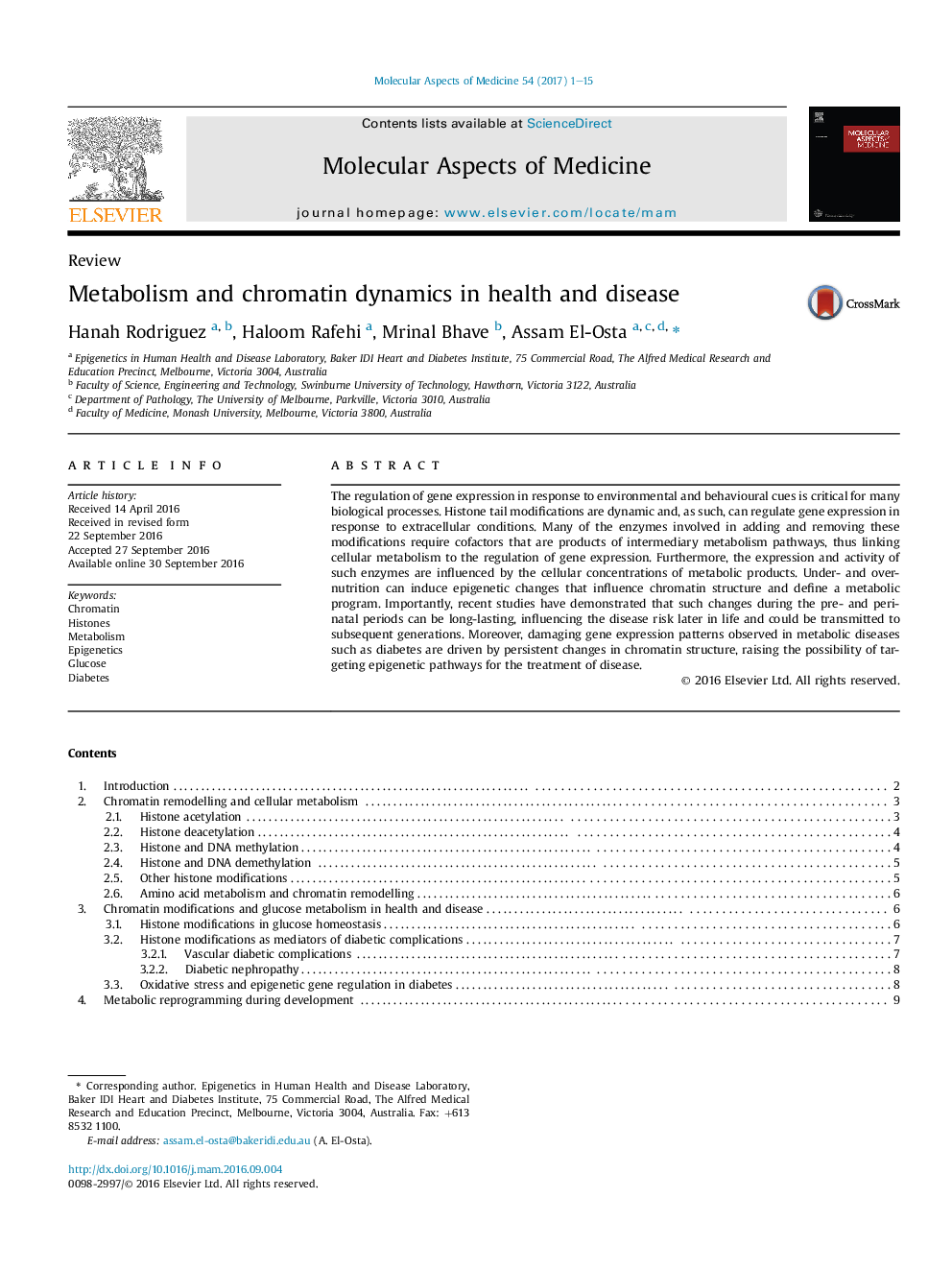| Article ID | Journal | Published Year | Pages | File Type |
|---|---|---|---|---|
| 5513822 | Molecular Aspects of Medicine | 2017 | 15 Pages |
The regulation of gene expression in response to environmental and behavioural cues is critical for many biological processes. Histone tail modifications are dynamic and, as such, can regulate gene expression in response to extracellular conditions. Many of the enzymes involved in adding and removing these modifications require cofactors that are products of intermediary metabolism pathways, thus linking cellular metabolism to the regulation of gene expression. Furthermore, the expression and activity of such enzymes are influenced by the cellular concentrations of metabolic products. Under- and over-nutrition can induce epigenetic changes that influence chromatin structure and define a metabolic program. Importantly, recent studies have demonstrated that such changes during the pre- and peri-natal periods can be long-lasting, influencing the disease risk later in life and could be transmitted to subsequent generations. Moreover, damaging gene expression patterns observed in metabolic diseases such as diabetes are driven by persistent changes in chromatin structure, raising the possibility of targeting epigenetic pathways for the treatment of disease.
